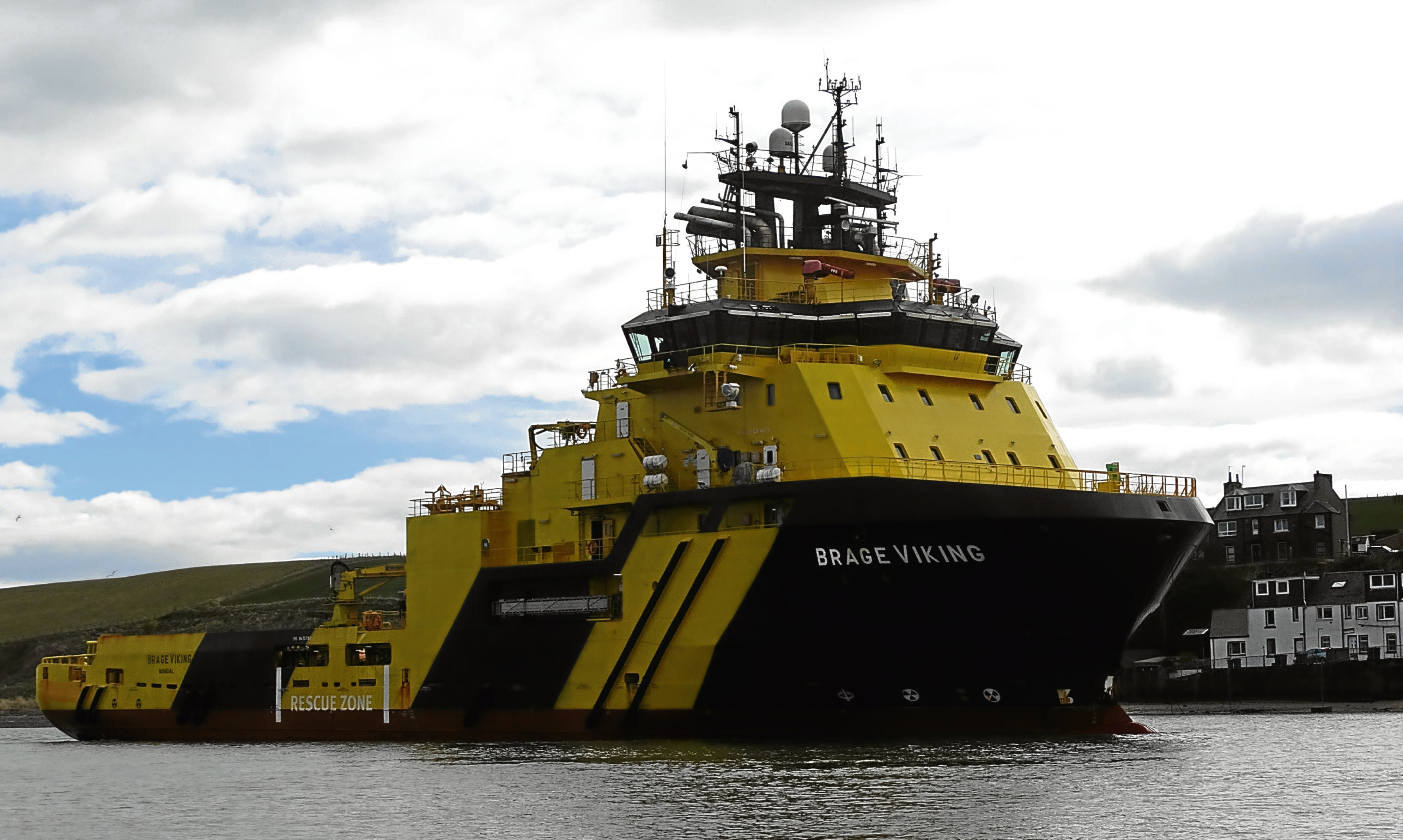The only time I took Inka One, the current Inka’s grandfather, on Montrose beach was for a surprise first birthday party for Kiwi, another black Labrador.
Nothing was forgotten, I remember. There were races with prizes, bowls of fresh drinking water, even a spade provided to dispose of unexpected offerings. In true party tradition a birthday cake was produced and cut up but, in case anyone should think the dogs were having all the fun, it was handed round only their owners.
The weather was totally inappropriate, with a howling wind and pelting rain and, to add to the sense of disbelief, at the insistence of our hosts’ grandchildren every dog went home with a special canine party goody bag.
I couldn’t promise the current Inka such excitement when I took him to the beach on Monday. I was making one of my occasional visits to the grave of Sea Dog Bamse, the Second World War Norwegian St Bernard dog whose story retired Montrose GP, Dr Andrew Orr, and I co-authored in the book of the same name.
Our hero is buried in the sand dunes at the mouth of the River South Esk overlooking the old fishing village of Ferryden and Scurdie Ness Lighthouse.
Bamse died on July 22 1944 and his grave has been faithfully tended and cared for to this day and become a place of pilgrimage for Norwegians who want to preserve the memory of the dog who contributed so much to their fighting men’s morale far from home during the conflict.
I’d chosen a good day and I let Inka run free along the shore. I grew up in Montrose and often walked on this part of the beach and saw Bamse’s grave with its cross. Surprisingly when I think about it now my father, who was a great dog man, never mentioned the dog’s story to me and I never knew the grave’s significance until Andrew and I wrote the book.
It was practically high tide, the sea lapping the shore with almost apologetic ripples. The pilot boat from the port sped down the river, throwing off a fine bow wave.
A ship was waiting in Montrose Bay to be piloted up the narrow river to its berth. I found a sheltered spot looking across to Ferryden and sat down to wait for my ship to come in.
Countryside skills
My parents were very friendly with the Tindal family who had the shop and post office in Ferryden square and I have the happiest memories of visiting them during school holidays in the 1950s.
Jim Tindal, originally from Stonehaven, was a trained confectioner but he was a countryman through and through and I learned a great deal of practical wisdom from him, not least the art of ferreting.
He was also a relief lighthouse keeper for Scurdie Ness and several times my father and I climbed the steps to the top of the lighthouse to watch the light being lit. I was allowed to walk round the balcony at the top of the tower, which was pretty exhilarating when there was a strong breeze. Such a thing would never be countenanced today.
My mother told me that due to wartime shortages Jim Tindal climbed down the cliffs at Usan, round the coast from Ferryden, to collect gulls eggs for my christening cake, which he baked and iced.
Ferryden grew up as a fishing village straggling along the now almost forgotten south outlet stream of The River South Esk and Montrose Basin. In the 1970s the channel was reclaimed by Montrose Port Authority to create an oil support base and Rossie Island ceased to be an island.
Peter Anson in Fishing Boats and Fisher Folk on the East Coast of Scotland wrote that in the 17th and 18th Centuries up to 500 fishing boats were engaged in Montrose and Ferryden in the herring, cod and ling fishing. By the 1950s the numbers were down to three or four moored off Ferryden pier, which is now incorporated into the support base wharfage.
Ferryden’s shore was lined with the fishermen’s black, tarred net sheds, all of which are gone. To an outsider its architecture and layout is clearly that of a former fishing village but the last domestic sign of its past is the half dozen washing lines on endless pulleys sticking out over the shore to save space on land.
When I was a youngster the largest vessel coming into Montrose was the beerie or beer boat, Lochside II, a coaster which carried Montrose beer from the Lochside brewery to Newcastle for 30 years.
With the pilot on board, the oil support vessel Brage Viking edged into the rivermouth and making minimum way, gently sailed on the top of the tide up to her berth.
Before construction of the oil base, when the river was dredged, vessels of such size could never have entered the river. But nothing stays the same and now they are the lifeblood of the port.
And with that profound thought Inka and I wandered back to the car.
